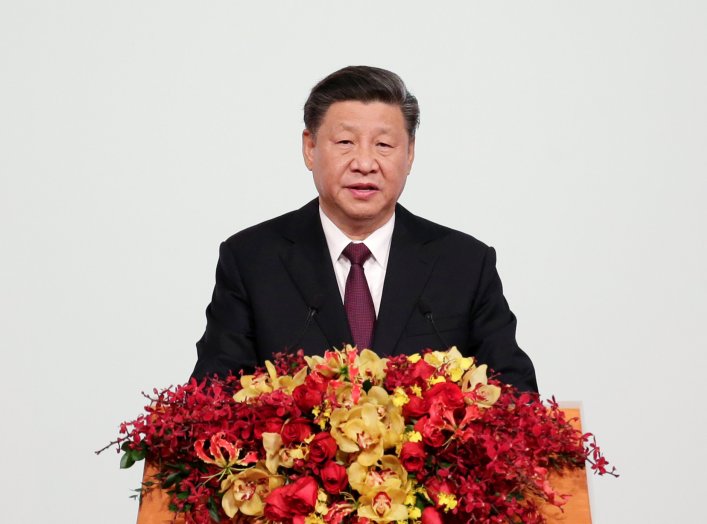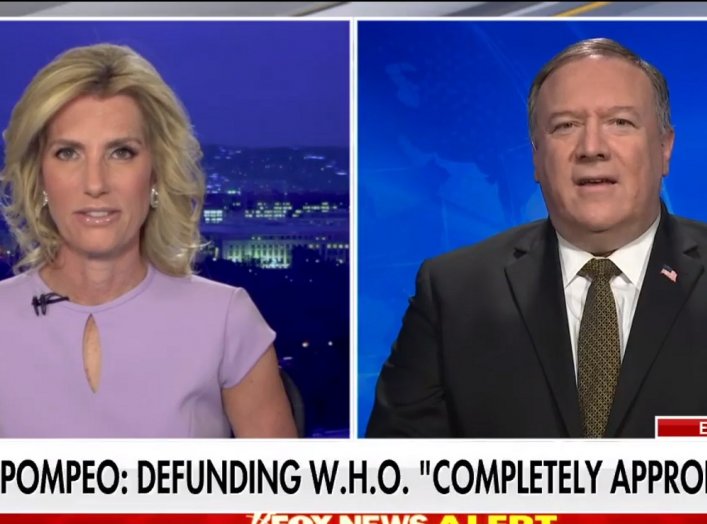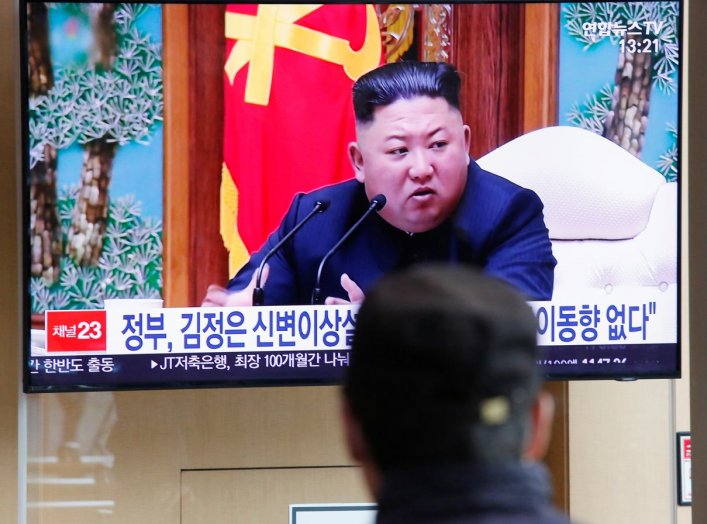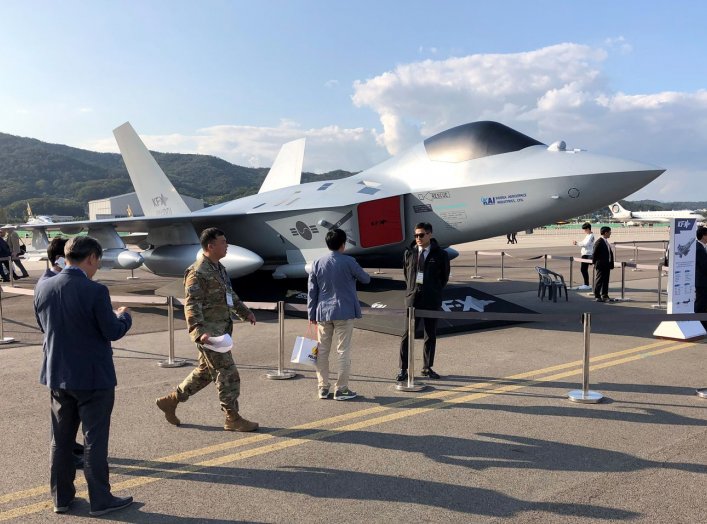
A billboard thanking Xi Jinping for China’s coronavirus assistance in Belgrade, Serbia, April 2020
From the first days of COVID-19’s appearance in the city of Wuhan, China’s leaders focused on control—not only of the coronavirus itself but also of information about it. They suppressed initial reporting and research about the outbreak, thereby slowing efforts to understand the virus and its pandemic potential. They called for “increased internet control” when the Politburo Standing Committee met in early February. They even sent “Internet police” to threaten people posting criticism of the Chinese Communist Party (CCP) and its handling of the virus.
Before long, that effort at controlling information went global. As it began to contain the outbreak within its own borders, Beijing launched an assertive external information campaign aimed at sculpting global discussion of its handling of the virus. This campaign has clear goals: to deflect blame from Beijing’s own failings and to highlight other governments’ missteps, portraying China as both the model and the partner of first resort for other countries. Some of this campaign’s elements are familiar, focused on promoting and amplifying positive narratives about the CCP while suppressing information unfavorable to it. But in recent weeks, Beijing has taken a more aggressive approach than usual, even experimenting with tactics drawn from Russia’s more nihilistic information operations playbook. That strategy aims not so much to promote a particular idea as to sow doubt, dissension, and disarray—including among Americans—in order to undermine public confidence in information and prevent any common understanding of facts from taking hold.
“BE TRANSPARENT!”
When reports of the novel coronavirus surfaced in December, the CCP at first focused on suppressing them—most notoriously by punishing the “whistleblower doctor” Li Wenliang, who later succumbed to the virus about which he had tried to sound the alarm. (Censors were overwhelmed by the eruption of online tributes following his death, some of which invoked the song “Do You Hear the People Sing?” from Les Misérables—a rallying cry for protesters in Hong Kong—or cited the article in the Chinese constitution that provides for freedom of expression.) But as China began to get the virus’s spread under control internally and outbreaks started outside its borders, the focus changed.
Seizing the fortunate timing and vacuum of global leadership, China began sending medical aid to European countries facing outbreaks (some items proved substandard or defective)—along with an aggressive messaging strategy to tout this assistance. Chinese officials and media sought to paper over their own failings and recast China as the leader in a global response to the pandemic. This tactic was particularly prevalent in Italy, the first European country to be hard hit by the virus (and which formally signed on to China’s Belt and Road Initiative last year). The Chinese embassy there embraced the hashtag #ForzaCinaeItalia (“Let’s Go, China and Italy”), which Italian researchers found was then heavily amplified by a network of bots on Twitter.
Yet these positive narratives about Chinese aid have been accompanied by more negative messages, focused especially on the failings of the United States. Chinese officials and media have criticized Washington’s slow response to the virus. The Foreign Ministry spokesperson Zhao Lijian tweeted: “Countries like Singapore, ROK took necessary measures & put the epidemics under control because they made full use of this precious time China bought for the world. As for whether US availed itself of this window, I believe the fact is witnessed by US &the world.” The always trolling Hu Xijin, editor in chief of Global Times (an English-language offshoot of the CCP’s People’s Daily), tweeted, “What really messed up the world is failure of the US in containing the pandemic.” A press release issued by the Chinese embassy in Paris hailed the success of China’s “dictatorship” over the United States’ “flagship of democracy,” pushing the message that Beijing’s model is superior and that it, rather than Washington, is the reliable partner to countries in need. In what could be called projection, Chinese officials and CCP media outlets have even criticized the United States for a lack of transparency about the virus’s spread. “Be transparent! Make public your data! US owe us an explanation!” tweeted Zhao Lijian. Notably, state media outlets have paid to promote these stories to U.S. audiences, in undisclosed political ads on Facebook and Instagram—platforms that are blocked in China.
These voices have not stopped at mere criticism. They have actively pushed disinformation about the origin of the coronavirus, including on Twitter (which is also blocked within China). The most prominent conspiracy theory—that the virus actually originated in the United States—first circulated internally in China, with the apparent assent of censors. It broke through to an external audience when Zhao Lijian tweeted an article from a known pro-Kremlin conspiracy website alleging that the virus originated in a U.S. bioweapons lab and was spread by the U.S. Army. More than a dozen Chinese ambassadors and embassies, from South Africa to France, amplified the story on Twitter, and the tweet went viral. Even after Chinese Ambassador to the United States Cui Tiankai disavowed it, other Chinese officials and media outlets have continued to spread it. Global Times piled on with another theory, twisting the words of an Italian scientist to suggest that the virus actually may have started in Italy.
Beyond overt information campaigns, Chinese operatives have also engaged in covert efforts to manipulate information and sow chaos—even amplifying false text messages that went viral in the United States in mid-March warning in panicked tones that Trump was about to order a two-week national quarantine. The messages caused such panic that the National Security Council took the unusual step of tweeting that they were false.
These efforts reflect changes not just in Beijing’s message but also in the mechanisms by which it is transmitted. Over the past year, the number of Chinese diplomats and embassies on Twitter has grown by more than 250 percent. On other Western social media platforms, the government has undertaken aggressive advertising to grow its audience; Chinese state media outlets, such as Global Times, CGTN, and Xinhua, represent several of the fastest-growing media pages on Facebook, according to research from Freedom House. And the Chinese government has invested billions of dollars in its foreign media presence, creating wider channels to distribute Beijing’s messages to external audiences.
INFORMATION IS POWER
Beijing has long understood that harnessing information can be a means of exercising geopolitical power. Particularly under President Xi Jinping, CCP doctrine has emphasized the importance of “discourse power”—“Beijing’s aspirations not only to have the right to speak on the international stage but also to be listened to, to influence others’ perceptions of China, and eventually to shape the discourse and norms that underpin the international order,” as Nadège Rolland of the National Bureau of Asian Research has described it. But China’s external information efforts have typically focused on promoting positive narratives (as with its COVID-19-related assistance) and suppressing criticism. China’s expulsion of reporters from The Wall Street Journal in retaliation for coverage of underreporting data on the virus’s spread and a controversially titled op-ed on its handling of the outbreak is consistent with its long-standing posture toward critical information. But new elements of China’s information strategy represent a departure from past practice—suggesting that Chinese officials see its usual approach as insufficient to the current crisis and are thus resorting to more extreme measures.
For those, Beijing seems to have looked to Moscow, which focuses less on promoting a positive image of Russia and instead aims to sow confusion and deflect blame. Russian officials, diplomats, and state media regularly promote extreme views, conspiracy theories, and doubts about democratic institutions on social media, while networks of covert accounts spread divisive or conspiratorial content without the fingerprints of the state. For example, the coordinated use of diplomatic accounts to spread disinformation—in the form of multiple, conflicting narratives meant to muddy rather than supplant the truth—has been a key part of the Kremlin’s playbook. In 2014, when Malaysia Airlines flight MH17 was shot down over eastern Ukraine by Russian-provided missiles, Russian officials pushed outlandish claims about a Ukrainian fighter jet being the real culprit or President Vladimir Putin’s jet the real target. In 2018, after Russian military intelligence’s poisoning of the former KGB agent Sergei Skripal and his daughter in the United Kingdom, they spread theories pinning the blame on everyone from the Americans to the Georgians. China’s recent promotion of known conspiracy-theory websites is another move taken from the Russian playbook. And all of this comes at a time of broader intersection between the messaging of Chinese, Russian, and Iranian state information actors: Russian and Iranian state media account for two of the top five most retweeted news outlets by Chinese officials and media.
Whether or not this more negative approach marks a permanent break from China’s previous strategy, it is part of a clear trend. During the Hong Kong protests last year, Beijing began experimenting with covert information operations on Facebook, Twitter, and YouTube, using false personas and pages that aimed to discredit the protesters by portraying them as violent. And Chinese officials and media have promoted conspiracy theories about both the Hong Kong protests (alleging that the United States is behind them) and the treatment of Uighurs in Xinjiang (sharing stories from a conspiracy site to dismiss research by “U.S.- and NATO-funded” institutions on camps in Xinjiang as “lies”). Like the Hong Kong protests, the COVID-19 information campaign may be another opportunity for Beijing to update its information arsenal.
At least some of these efforts may be intended as an internal bank shot: by sowing doubt externally about the virus’s origins, the CCP can reinforce that view within China without officially promoting it. Indeed, Beijing’s strategy is likely driven both by insecurity at home and by opportunism abroad. Through its combination of positive and negative messaging, the CCP has been able to persuade the Chinese people not only that its model is an example for the world but also that the CCP is pushing back on efforts to blame China—and ethnically Chinese people—for the virus. Racist and xenophobic tropes about the virus and anti-Chinese hate crimes—which state media have aggressively recounted to audiences within China—have only helped the CCP, allowing it to stoke nationalism, dismiss criticism of China’s handling of the virus as racism, and present itself as defending the honor of the Chinese people.
MIXED SIGNALS
This aggressive new information strategy carries risks for Beijing, and in some quarters it seems to be backfiring. Lashing out at the United States, spreading disinformation, and amplifying conspiracy sites risk undermining any positive image China has managed to develop. Simultaneously portraying itself as a responsible global provider of public goods while engaging in irresponsible behavior online sends contradictory signals.
But the strategy may nonetheless succeed if democracies around the world don’t counter it wisely with their own affirmative strategy for the ongoing information contest of which this episode is just the latest chapter. So far, Washington has if anything played into Beijing’s hands. Its bungled initial response to the novel coronavirus and failure to coordinate with allies created openings for China to present itself as a more reliable partner than the United States. The United States’ refusal to sign on to a G-7 statement because other countries would not agree to use the term “Wuhan virus” undermined a multilateral effort and gave the CCP a propaganda win.
Washington should seize the opportunity to coordinate with European allies, who are increasingly concerned about China’s play for influence. European Union High Representative Josep Borrell explicitly called out the way in which the “politics of generosity” is being weaponized for geopolitical purposes in a “struggle for influence.” French President Emmanuel Macron similarly urged Europeans not to be “intoxicated” with the narratives that China and Russia have pushed alongside their aid as a means of dividing Europeans internally. But while others in his administration have called out China’s disinformation efforts, U.S. President Donald Trump has excused them because “every country does it.”
Democracies cannot win the information contest with authoritarian regimes such as China’s by adopting their tactics. Instead, the United States needs to embrace transparency—including acknowledging its own failings and promoting accurate information—and work with its democratic partners and allies on a shared approach. China will succeed in using the pandemic to “emerge from the wreckage as more of a global leader than it began,” as Mira Rapp-Hooper has written, only if the United States lets it.






